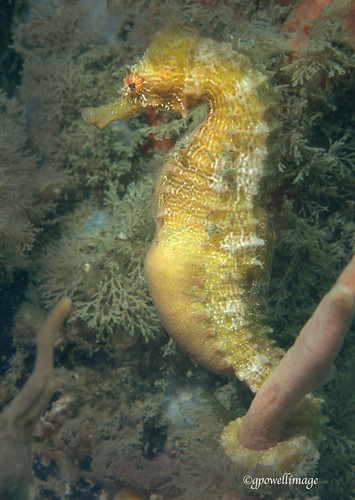A 3D product of BmCRT was created not only for analyzing regardless of whether these two proteins interact, but also to get an perception into the physicochemical profile and residues (sites) at the protein interface. This is probably the first report to the ideal of our understanding which display CRT-C1q conversation at the structural degree of proteins. These conclusions will be important in comprehending the system of host (human)-parasite (B. malayi) interactions and may assist in reducing the odds of infection.
Grownup worm, L3, and Mf of B. malayi have been isolated from infected Mastomys coucha and E/S goods of grownup worms were gathered in RPMI 1640 culture media as documented before [492]. The process provided incubation of nearly 80 parasites in 1 ml medium for 6 h. The supernatant that contains E/S product was collected by centrifugation at 10,000 rpm for 10 min and saved at 220uC. The soluble extract was attained by centrifuging homogenized 1000000 L3 and all other lifestyle phases (Grownup, Mf) of parasite in 300 ml PBS at ten,000 rpm for twenty min. The scientific studies on animals were authorized by the Institutional Animal Ethics Committee (IAEC) of CSIR-CDRI, Federal government of India.
In accordance to the sequence details available at NCBI (www. ncbi.nlm.nih.gov) (ID: XP_001896170.1) BmCRT gene was used for designing the specific primers  fifty nine CATATGCAGCTGTATTTACTGTTAGGACTTG39(forward)and59CTCGAGCAGCTCTTCATGTGTTTCATCATC39 (349085-82-1 reverse) for PCR amplification with NdeI (CATATG) restriction site at the fifty nine end and XhoI (CTCGAG) site at the 39 finish. PCR amplification consisted of 30 cycles (30 s at 94uC, 1 min at fifty seven.7uC and 2 min at 72uC), adopted by extension cycle (ten min at 72uC) on a PTC 200 PCR system (MJ Study, Usa). The amplified BmCRT PCR product was purified and ligated into pGEMT-simple cloning vector. E. coli DH5a cells have been transformed with the ligated product and developed right away on agar plates supplemented with one hundred mg/ml ampicillin. Appropriate recombinants ended up recognized by restriction digestion and sequencing. Constructive clones had been checked for expression of protein by IPTG (one mM isopropyl-b-thiogalactopyranoside) induction. L21 (DE3) pLysS cells containing the recombinant plasmid coding 6xHis-BmCRT had been grown at 18uC in LB medium, supplemented with 50 mg/ml 25834119kanamycin, shaking at 180 rpm. Tradition was induced by addition of 1 mM IPTG for in excess of expression of the gene of curiosity and developed for an added 1618 h at 20uC with shaking and cells have been harvested by centrifugation at ten,000 rpm for 3 min. For protein purification, lysis buffer (50 mM Na2HPO4, two hundred mM NaCl, ten mM Imidazole, pH seven.6) was added to cells pellet that contains one mM PMSF, five mg/ ml lysozyme, one% Triton-X 100 and 3 mM bME. Cells ended up lysed by sonication (Ultrasonic processor, Design-XL-2020, Germany) and lysate was centrifuged at 12,000 rpm for 30 min at 4uC. Supernatant was loaded on to Ni- nitrilotriacetic acid (NTA) column (Qiagen) pre-equilibrated with lysis buffer. Contaminating proteins had been taken out by subsequent three washes with washing buffers containing (50 mM Na2HPO4, two hundred mM NaCl, 30 mM Imidazole), (50 mM Na2HPO4, 200 mM NaCl, 50 mM Imidazole) and (fifty mM Na2HPO4, 200 mM NaCl, a hundred mM Imidazole). Recombinant protein was lastly eluted by elution buffer (fifty mM Na2HPO4, two hundred mM NaCl, 250 mM Imidazole). For all experiments the purified BmCRT was dialyzed right away towards fifty mM Na2HPO4, one hundred fifty mM NaCl, pH 7.five buffer made up of ten mM EGTA and for eliminating EGTA it was dialyzed towards 50 mM Na2HPO4, one hundred fifty mM NaCl, pH seven.5 buffer overnight.
fifty nine CATATGCAGCTGTATTTACTGTTAGGACTTG39(forward)and59CTCGAGCAGCTCTTCATGTGTTTCATCATC39 (349085-82-1 reverse) for PCR amplification with NdeI (CATATG) restriction site at the fifty nine end and XhoI (CTCGAG) site at the 39 finish. PCR amplification consisted of 30 cycles (30 s at 94uC, 1 min at fifty seven.7uC and 2 min at 72uC), adopted by extension cycle (ten min at 72uC) on a PTC 200 PCR system (MJ Study, Usa). The amplified BmCRT PCR product was purified and ligated into pGEMT-simple cloning vector. E. coli DH5a cells have been transformed with the ligated product and developed right away on agar plates supplemented with one hundred mg/ml ampicillin. Appropriate recombinants ended up recognized by restriction digestion and sequencing. Constructive clones had been checked for expression of protein by IPTG (one mM isopropyl-b-thiogalactopyranoside) induction. L21 (DE3) pLysS cells containing the recombinant plasmid coding 6xHis-BmCRT had been grown at 18uC in LB medium, supplemented with 50 mg/ml 25834119kanamycin, shaking at 180 rpm. Tradition was induced by addition of 1 mM IPTG for in excess of expression of the gene of curiosity and developed for an added 1618 h at 20uC with shaking and cells have been harvested by centrifugation at ten,000 rpm for 3 min. For protein purification, lysis buffer (50 mM Na2HPO4, two hundred mM NaCl, ten mM Imidazole, pH seven.6) was added to cells pellet that contains one mM PMSF, five mg/ ml lysozyme, one% Triton-X 100 and 3 mM bME. Cells ended up lysed by sonication (Ultrasonic processor, Design-XL-2020, Germany) and lysate was centrifuged at 12,000 rpm for 30 min at 4uC. Supernatant was loaded on to Ni- nitrilotriacetic acid (NTA) column (Qiagen) pre-equilibrated with lysis buffer. Contaminating proteins had been taken out by subsequent three washes with washing buffers containing (50 mM Na2HPO4, two hundred mM NaCl, 30 mM Imidazole), (50 mM Na2HPO4, 200 mM NaCl, 50 mM Imidazole) and (fifty mM Na2HPO4, 200 mM NaCl, a hundred mM Imidazole). Recombinant protein was lastly eluted by elution buffer (fifty mM Na2HPO4, two hundred mM NaCl, 250 mM Imidazole). For all experiments the purified BmCRT was dialyzed right away towards fifty mM Na2HPO4, one hundred fifty mM NaCl, pH 7.five buffer made up of ten mM EGTA and for eliminating EGTA it was dialyzed towards 50 mM Na2HPO4, one hundred fifty mM NaCl, pH seven.5 buffer overnight.
